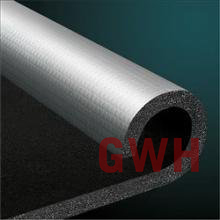Thermal insulation materials refer to materials that can block the transfer of heat flow, also known as thermal insulation materials. Traditional thermal insulation materials, such as glass fiber, asbestos, rock wool, silicate, etc., new thermal insulation materials, such as aerogel felt, vacuum panels, etc. They are used for building envelopes or thermal equipment, materials or material composites that impede the transfer of heat flow, including both thermal and cold insulation materials. On the one hand, the thermal insulation material satisfies the thermal environment of the building space or thermal equipment, and on the other hand saves energy. Therefore, some countries regard thermal insulation materials as the “fifth largest energy” after coal, oil, natural gas, and nuclear energy.
According to the use temperature limit of thermal insulation materials, it can be divided into three types: high temperature, medium temperature and low temperature thermal insulation materials.
Insulation material for high temperature, the operating temperature can be above 700 ℃. Such fibrous materials include aluminum silicate fibers and silicon fibers; porous materials include diatomite, vermiculite plus asbestos, and heat-resistant adhesives.
Insulation material for medium temperature, the operating temperature is between 100~700℃. Fibrous materials for medium temperature include aerogel felt, asbestos, slag wool and glass fiber; porous materials include calcium silicate, expanded perlite, vermiculite and foamed concrete.
Insulation material for low temperature, used in cold insulation projects where the temperature is below 100°C.

